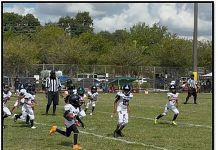 Nighttime driving is statistically more risky than daytime driving- the nighttime crash rate is about 3 times higher than the daytime crash rate. While many factors are at play during nighttime conditions, drivers generally acknowledge that their nighttime visibility of the roadway and roadside is significantly reduced compared to their daytime visibility. Traffic signs and pavement markings are made with retro-reflective materials to help increase their visibility during nighttime conditions. Retro-reflective materials are unique in that they shine headlamp light back toward the driver.
Nighttime driving is statistically more risky than daytime driving- the nighttime crash rate is about 3 times higher than the daytime crash rate. While many factors are at play during nighttime conditions, drivers generally acknowledge that their nighttime visibility of the roadway and roadside is significantly reduced compared to their daytime visibility. Traffic signs and pavement markings are made with retro-reflective materials to help increase their visibility during nighttime conditions. Retro-reflective materials are unique in that they shine headlamp light back toward the driver.
The Manual on Uniform Traffic Control Devices (MUTCD) requires most signs and pavement markings to be retro-reflective. The MUTCD has new standards that were built on the nighttime needs of older drivers to see and read traffic signals.
Recent research results from the Florida Highway Administration (FHWA) shows, that not only does the retro-reflectivity of the pavement markings appear to be linked to safety, but so does the width of the pavement markings. Wider edge lines on two-lane highways are a cost effective, statistically-sound approach to reducing run-off-the-road crashes and fatalities. Wider edge lines are an effective countermeasure in their own right and can also be considered in combination with other countermeasures such as rumble strips. Rumble strips address crashes where the driver is distracted, drowsy or otherwise inattentive and can be effective even during rain. Also, wider edge lines seem to be effective where the driver is looking at the roadway/striping or where the driver’s peripheral vision is picking up the marking.
Traffic safety professionals continue to improve the signs and pavement markings on our nation’s highways to provide a safer and more comfortable driving experience. The goal is to ensure adequate visibility for nighttime drivers.






